True Jazz Stories: “An Evening With George,” by Terry Sanville
The writer tells his story of playing guitar with a symphony orchestra, backing up jazz legend George Shearing.
...The writer tells his story of playing guitar with a symphony orchestra, backing up jazz legend George Shearing.
...The journalist and poet Joel Lewis shares his immensely colorful story of falling in love with jazz, and living with it and reporting on it during his younger days in New Jersey and New York
...Friends remember Al Summ, whose love and appreciation of jazz showed up in a variety of ways. His artwork was found (and rescued) by his friends Dan Brown, Dave Watson, Bob Crimi and “Andy” – a.k.a. “The Gang of Four”.
This remembrance is a reminder of how jazz and its culture can touch the soul of an enthusiast, and a demonstration of a longtime, devoted friendship. I am proud to assist the “Gang” in sharing their heartfelt connection to their departed friend.
.... . Joseph Maita, Sr. c. 1935 . ___ . …..My father Joseph Maita (Sr.) was affable, charismatic, and loving – gifted as a musician and, ultimately, a successful business owner. He was also extraordinarily complex and challenged by having to make choices so many young parents find themselves confronting – following … Continue reading “True Jazz Stories: Musical Adventures of Joe Maita, Sr.”
...Part 1: Confirmation (1969)
It wouldn’t be the first time my penchant for whistling jazz tunes got me in trouble…nor the last.
I’d been crazy about whistling from my boyhood. Perhaps I inherited my obsession from my late father. He wasn’t a jazz fan like I am, and I barely even remember him whistling—he wasn’t around much when I was a boy and he died when I was twelve—but my mom later told me he was an outstanding whistler. “He could do triple tonguing and everything,” she said.
So maybe it was in my DNA. But at any rate, after his death I determinedly taught myself to whistle. I have a good ear and decent sense of pitch, so I found I could easily get in sync with whatever music I was hearing. And then I practiced and practiced, whistling along with jazz compositions and solos for years until I got
...In this story – a short listed entry in our recently concluded 66th Short Fiction Contest – a private investigator tries to help a homeless friend after his saxophone is stolen.
...In this edition, Rife writes about jazz novels and short stories that feature stories about women, written by women.
...For over 60 years, the legendary recording engineer Rudy Van Gelder devoted himself to the language of sound. And although he recorded everything from glee clubs to classical music, he was best known for recording jazz – specifically the musicians associated with Blue Note and Prestige records. Joel Lewis writes about his impact on the sound of jazz, and what has become of his Englewood Cliffs, New Jersey studio.
...In this edition, Rife writes about jazz novels and short stories that feature a theme of “mystery.”
...The author talks about his book, an intensely researched, spirited, and beautifully told story – and an important reminder that Armstrong, Ellington, and Basie all defied and overcame racial boundaries “by opening America’s eyes and souls to the magnificence of their music.”
...In this fourth edition featuring excerpts from his book, Rife writes about five novels/short fiction that include stories about the interconnected cultures of jazz, dancing and nightclubs.
...In this, the 17th major collection of jazz poetry published on Jerry Jazz Musician, 50 poets from all over the world again demonstrate the ongoing influence the music and its associated culture has on their creative lives.
...A myriad of styles and experiences displayed in eight thoughtful and provocative poems about jazz music…
...A nine-hour long Spotify playlist featuring songs by the likes of Horace Silver, Lee Morgan, Miles Davis, Wayne Shorter, Ahmad Jamal, and Dizzy Gillespie that demonstrates how the Latin music influence on jazz has been present since the music’s beginnings.
...it seems like thousands
of nights hunkered
over dark beer and jazz
with my Guru
the janitor who taught
jazz to the novice
One-third of the Winter, 2024 collection of jazz poetry is made up of poets who have only come to my attention since the publication of the Summer, 2023 collection. What this says about jazz music and jazz poetry – and this community – is that the connection between the two art forms is inspirational and enduring, and that poets are finding a place for their voice within these virtual pages.
...This story — a finalist in the recently concluded 64th Short Fiction Contest — harkens back to Richard Brautigan’s fiction of the ’70s, and explores modern day co-worker relationships/friendship and the politics of for profit “Universities”
...In Becoming Ella Fitzgerald: The Jazz Singer Who Transformed American Song, the book’s author Judith Tick writes that Ella “fearlessly explored many different styles of American song through the lens of African American jazz, [and] treated jazz as a process, not confined to this idiom or that genre,” and who “changed the trajectory of American vocal jazz in this century.” Ms. Tick. who is professor emerita of music history at Northeastern University, talks with about Ella – and her book – in this wide-ranging October 23, 2023 interview.
...This edition features poetry chosen from hundreds of recent submissions, and from a wide range of voices known – and unknown – to readers of these collections. The work is unified by the poets’ ability to capture the abundance of jazz music, and their experience with consuming it.
...This is the 14th extensive collection of jazz poetry published on Jerry Jazz Musician since the fall of 2019, when the concept was initiated. Like all previous volumes, the beauty of this edition is not solely evident in the general excellence of the published works; it also rests in the hearts of the individuals from diverse backgrounds who possess a mutual desire to reveal their life experiences and interactions with the music, its character, and its culture.
...An impeccably researched biography of an influential figure in American music, the goal of which is “to draw attention away from the circumstances surrounding Ayler’s death and bring it sharply back to the legacy he left behind.”
...Writers talk about influential life experiences with writing, literary figures who inspired their work, overcoming creative and economic challenges, and where they fit in today’s publishing model.
...Billie Holiday scholar and biographer Farah Griffin discusses one of the most gifted jazz artists of all time, and one of the most elusive…
...A collection in which over 30 poets communicate their appreciation for jazz music in poems no longer than seven lines.
....This collection of jazz poetry – the largest yet assembled on Jerry Jazz Musician – demonstrates how poets who are also listeners of jazz music experience and interact with the spontaneous art that arises from jazz improvisation, which often shows up in the soul and rhythm of their poetic language.
...A broad collection of jazz poetry authored by an impressive assemblage of regular contributors and established poets new to this publication – all of whom open their imagination and hearts to the abundant creative experience they derive from this art.
...The authors describe the circumstances surrounding the creation of an extended version of Duke Ellington’s little-known 1953 composition “Janet”
...Bob Hecht recalls his experience of first hearing “Kind of Blue,” the 1959 jazz album by trumpeter Miles Davis
...The author recalls an eventful evening listening to a jazz singer at New York’s McAlpin Hotel in the early 1970s
...Over 60 poets from all over the world celebrate their love of jazz…in poetry.
...The author’s experience with racism, ignorance, poverty, and jazz in the American South of the 1960s.
...We’re going through Security at Dublin airport, headed to Philadelphia, thinking about what’s ahead of us. There’s something sinister about lines of people queuing up to be processed. Nobody likes it. Belt, jacket, phone, laptop, wallet. Do they need my shoes? Everyone feels displaced, dehumanized somehow.
...Three in the morning in the Hollywood Hills feels like five in the morning anywhere else. The coyotes and owls cross the northern boundaries and stray down under the big HOLLYWOOD sign that glistens in the moonlight at the top of Beachwood Canyon. Field mice, possum, snakes, and house cats become fair game for the wild intruders that prowl the narrow streets and canyons for a quick kill and a quiet meal with the family.
...The book’s co-author in conversation about the little-known life story of the pioneering Ms. Dodgion, who defied the odds to become a world-class jazz drummer in a world – and on an instrument – dominated by men.
...Molly Larson Cook’s abstract-expressionist paintings accompany the 50 poets contributing to this collection. Her art has much in common with the poetry and music found within it; all three art forms can be described as “landscapes of the imagination,” created by artists from all over the world who are inspired in a meaningful way by jazz music, and whose work can be uniquely interpreted and appreciated (or not!) by those who consume it.
...In this edition, Veryl Oakland’s photographs and stories feature the singers Sarah Vaughan and Betty Carter
.... . photo by William Gottlieb/Library of Congress Mary Lou Williams, c. 1938 . . ___ . . Opus for Mary Lou By John Bliss . …..“Baloney Bliss,” Mary Lou Williams said, lacing into my father. …..Mary Lou was Black and brought a spiritual magic into my white world. Her nose was petite like an … Continue reading ““Opus For Mary Lou,” a true jazz story by John Bliss”
...“It’s not exclusive, but inclusive, which is the whole spirit of jazz.”
-Herbie Hancock
.
And…this spirit is not limited to the musicians, because celebrating jazz is rich in creative opportunity for writers and visual artists as well. The 54 poets who contribute to this poetry collection are living proof of that.
As always, thanks to the poets, and I hope you enjoy…
Joe
...In this edition, “Keeping Jazz Alive in the Desert,” Mr. Oakland’s photographs and stories focus on Monk Montgomery’s efforts to bring jazz to Las Vegas, and the notable jazz musicians who played in that city
...…..The Grenada-born trumpeter Arthur Briggs was among the first to introduce and popularize jazz music, and did so from Europe, where he permanently settled after arriving from Harlem in 1919, and where he eventually grew to be considered “the Louis Armstrong of Paris.” Little-known in America, his musical biography features his befriending and performing with the likes of Sidney Bechet (who Briggs was with when he bought his first soprano saxophone), Josephine Baker, Coleman Hawkins, and Django Reinhardt.
...An interview with The Art of Jazz author Alyn Shipton, whose book is an exploration of how jazz influenced sheet music art, album art, posters, photography, and individual works of fine art.
...In this edition, Mr. Oakland’s photographs and stories feature drummers Jo Buddy Rich, Louie Bellson/Tony Williams and Shelly Manne in “A Succession of Battery Mates, Part 2”
...In this winter collection of diverse themes and poetic styles, 55 poets wander the musical landscape to explore their spirit and enthusiasm for jazz music, its historic figures, and the passion, sadness, humor and joy it arouses.
.... . In a 2009 Jerry Jazz Musician interview, Robin D. G. Kelley, author of Thelonious Monk: The Life and Times of an American Original, talks about the legendary composer/pianist who was a founding father of modern jazz. . . .Robin D. G. Kelley, author of Thelonious Monk: The Life and Times of an … Continue reading “A Black History Month Profile: Thelonious Monk, a founding father of modern jazz”
...In this edition, Mr. Oakland’s photographs and stories feature drummers Jo Jones, Art Blakey and Elvin Jones.
...Bob Hecht talks with pianist Bill Charlap and writer Ted Panken about the late Phil Woods, and his book Life in E Flat: The Autobiography of Phil Woods
...Kevin Whitehead, the longtime jazz critic for NPR’s Fresh Air, discusses jazz music and the movies – the “natural allies” that both grew out of existing creative traditions, and, since the mid-1920’s have told stories about “child prodigies, naturals who pick up the music the first time they hear it, hard workers with a painstaking practice regimen, talented players diverted into soul-killing commercial work, and even non-improvisers taught to fake it.”
...Jazz and poetry have always had a symbiotic relationship. Their creative languages share the common soil of imagination and improvisation, from which their audiences discover inspiration and spirit, and perhaps even a renewed faith in life itself.
This collection features 50 gifted poets from places as disparate as Ohio and Nepal, Estonia and Boston, Guyana and Pittsburgh, each publicly sharing their inner world reverence for the culture of jazz music.
...In this edition of photographs and stories from Mr. Oakland’s book, Thelonious Monk, Paul Bley and Cecil Taylor are featured.
...Frank Sinatra floated through the air in my boyhood home and Philadelphia neighborhood. My mother and two of her older sisters, Henrietta and Marge, had seen young Frankie in person at Atlantic City’s Steel Pier in the late 1930s, the thrill that wed these young Italian-Americans to Frank for life. “It’s Always You” reached them. He was part of our Staffieri family — their fantasy husband.
...In this edition of photographs and stories from Mr. Oakland’s book, Dexter Gordon, Art Farmer and Johnny Griffin are featured.
.... . In 2005, Kevin Boyle’s National Book Award-winning book Arc of Justice: A Saga of Race, Civil Rights, and Murder in the Jazz Age told the story of Ossian Sweet, a Black doctor in Detroit who in 1925 moved from that city’s ghetto into a home of his own in a previously all-white neighborhood. … Continue reading “Interview with Kevin Boyle — author of Arc of Justice: A Saga of Race, Civil Rights, and Murder in the Jazz Age“
...33 poets from all over the globe contribute 47 poems. Expect to read of love, loss, memoir, worship, freedom, heartbreak and hope – all collected here, in the heart of this unsettling spring.
...In this edition of photographs and stories from Mr. Oakland’s impressive book, Frank Morgan, Michel Petrucciani, Charles Lloyd, and Emily Remler are featured…
...Ingham’s “Jazz Narratives” connect time, place, and subject in a way that ultimately allows the viewer a unique way of experiencing jazz history. This edition’s narratives are “The Annunciation of Chet Baker,” “Frank O’Hara Whispers to Scott LaFaro,” and “Blessing the Child.”
...The winter collection of poetry offers readers a look at the culture of jazz music through the imaginative writings of its 32 contributors. Within these 41 poems, writers express their deep connection to the music – and those who play it – in their own inventive and often philosophical language that communicates much, but especially love, sentiment, struggle, loss, and joy.
.... . . …..Jazz in Available Light, Illuminating the Jazz Greats from the 1960s, ’70s, and ’80s is one of the most impressive jazz photo books to be published in a long time. Featuring the brilliant photography of Veryl Oakland — much of which has never been published — it is also loaded with his … Continue reading “Veryl Oakland’s “Jazz in Available Light” — photos (and stories) of violinists Joe Venuti, Stephane Grappelli, Jean-Luc Ponty, Zbigniew Seifert, and Leroy Jenkins”
...In this edition, Mr. Oakland’s photographs and stories feature Mal Waldron, Jackie McLean and Joe Henderson
...Twenty-eight poets contribute 37 poems to the Jerry Jazz Musician Fall Poetry Collection, living proof that the energy and spirit of jazz is alive — and quite well.
(Featuring the art of Russell Dupont)
.
...The girl lived on the outskirts of town. It was mainly deserted, save for a few wild beasts that roamed the lands. But she lived with the wolves, and couldn`t breathe without feeling their fur across her lips and teeth. She asked them: what would you do if I left? And the wolves shook their grey eyes and stared at her until she cried.
...Jerry Jazz Musician regularly publishes a series of posts featuring excerpts of the photography and stories/captions found in Jazz in Available Light by Veryl Oakland. In this edition, Mr. Oakland’s photographs and stories feature Art Pepper, Pat Martino and Joe Williams.
...Nate Chinen, the former New York Times jazz critic who is now director of editorial content for WBGO Radio, talks about his book, Playing Changes: Jazz for the New Century
.... . Carol Friedman’s 1976 photograph of Chet Baker . _____ . …..For many of us who revere jazz music – especially those fortunate enough to have grown up during the era of the 12 x 12 record album jacket and coffee table photography books– the images of great musicians taken by photographers like William … Continue reading “The Jazz Photography Issue”
.... . Carol Friedman . ___ . …..During a career now spanning over three decades, the esteemed New York portrait photographer Carol Friedman’s iconic images have appeared on hundreds of album and CD covers. Her poignant, often spontaneous work – a generous sampling of which is on display within and following the interview – includes … Continue reading “Interview with renowned jazz photographer Carol Friedman”
...Jerry Jazz Musician regularly publishes a series of posts featuring excerpts of the photography and stories/captions found in Jazz in Available Light by Veryl Oakland. In this edition, Mr. Oakland’s photographs and stories feature Art Pepper, Pat Martino and Joe Williams.
...“Thinking about the Truesdells,” comes from a seven-work series entitled Pastoral Scenes from the Gallant South (from Billie Holiday’s “Strange Fruit”).
...In this month’s collection, with great jazz artists at the core of their work, 16 poets remember, revere, ponder, laugh, dream, and listen
...Seventeen poets contribute 21 poems in this month’s edition…
...18 poets contribute 20 poems to the March collection
...On March 11, 2019, .Jerry Jazz Musician.will publish the 50th.winning story in our thrice-yearly Short Fiction Contest. To celebrate this landmark event, we have asked all the previous winners (dating to 2002) to reflect on their own winning story, and how their lives have since unfolded.
This week’s edition covers authors of winning stories #’s 45 – 49
...On March 11, 2019, .Jerry Jazz Musician.will publish the 50th.winning story in our thrice-yearly Short Fiction Contest. To celebrate this landmark event, we have asked all the previous winners (dating to 2002) to reflect on their own winning story, and how their lives have since unfolded.
This week’s edition covers authors of winning stories #’s 39 – 44
...On March 11, 2019, .Jerry Jazz Musician.will publish the 50th.winning story in our thrice-yearly Short Fiction Contest. To celebrate this landmark event, we have asked all the previous winners (dating to 2002) to reflect on their own winning story, and how their lives have since unfolded.
This week’s edition covers authors of winning stories #’s 29 – 34
...On March 11, 2019, .Jerry Jazz Musician.will publish the 50th.winning story in our thrice-yearly Short Fiction Contest. To celebrate this landmark event, we have asked all the previous winners (dating to 2002) to reflect on their own winning story, and how their lives have since unfolded.
This week’s edition covers authors of winning stories #’s 24 – 28
...On March 11, 2019, .Jerry Jazz Musician.will publish the 50th.winning story in our thrice-yearly Short Fiction Contest. To celebrate this landmark event, we have asked all the previous winners (dating to 2002) to reflect on their own winning story, and how their lives have since unfolded.
This week’s edition covers authors of winning stories #’s 17- 23
...On March 11, 2019, .Jerry Jazz Musician.will publish the 50th.winning story in our thrice-yearly Short Fiction Contest. To celebrate this landmark event, we have asked all the previous winners (dating to 2002) to reflect on their own winning story, and how their lives have since unfolded.
This week’s edition covers authors of winning stories #’s 12 – 16
...On March 11, 2019, .Jerry Jazz Musician.will publish the 50th.winning story in our thrice-yearly Short Fiction Contest. To celebrate this landmark event, we have asked all the previous winners (dating to 2002) to reflect on their own winning story, and how their lives have since unfolded.
This week’s edition covers authors of winning stories #’s 7 – 11
.... . 12 poets contribute 19 poems dedicated to the culture of jazz music, and to the holiday season… . . Collage by Steve Dalachinsky John Stupp’s third poetry collection Pawleys Island was published in 2017 by Finishing Line Press. His manuscript Summer Job won the 2017 Cathy Smith Bowers Poetry Prize and will … Continue reading “Poetry celebrating jazz and the holiday season”
.... . Photo William Gottlieb/Library of Congress Charlie Parker is frequently found on the lists of noted critics and musicians answering the question, “What are 3 or 4 of your favorite jazz record recordings of the 1940’s?” This photograph by William Gottlieb was taken at Carnegie Hall in New York, c. 1947 . __________ … Continue reading “Reminiscing in Tempo: “What are 3 or 4 of your favorite jazz recordings of the 1940’s?””
...From a small balcony above the stage of the Maybeck Recital Hall in Berkeley, I’m looking down on the jazz duo of bassist Red Mitchell and pianist Roger Kellaway, while tapping my foot to the earthy, swinging beat they are laying down.
It’s a Sunday afternoon in 1992 at this unique venue. The recital hall is part of a house originally built by the famed architect Bernard Maybeck in the early twentieth century. (Maybeck designed the Palace of Fine Arts in San Francisco, along with many other notable buildings in that city.) The hall accommodates only about 50 people, and it’s a warm, redwood-paneled room with beautiful leaded glass windows on three sides. It actually feels a lot like being in a little chapel—but the religion being worshipped here is that of acoustic jazz, primarily of the pianistic variety.
For several years now, ‘The Maybeck’ as it’s familiarly called, has hosted a who’s-who of
...You are amused
by my passion
for taxicabs.
Their drivers know
where we are
going.
We don’t need a
...As a jazz musician for seven decades, and as a chronicler of its intellectual and spiritual development through his fascinating, award-winning photography, Milt Hinton acts as an essential connecting point for the music and its associated culture. Hinton played bass alongside iconic figures like Cab Calloway, Dizzy Gillespie, and Louis Armstrong, and, as a photographer, brought these men and a host of others into focus as musicians, artists, and vital contributors to twentieth-century American life.
With the generous consent of David G. Berger and Holly Maxson, who along with Milt Hinton co-authored Playing the Changes: Milt Hinton’s Life in Stories and Photographs, Jerry Jazz Musician presents a photo exhibit, “Jazz: Through the Life and Lens of Milt Hinton.”
...“Reminiscing in Tempo” is part of a continuing effort to provide Jerry Jazz Musician readers with unique forms of “edu-tainment.” As often as possible, Jerry Jazz Musician poses one question via e mail to a small number of prominent and diverse people. The question is designed to provoke a lively response that will potentially include the memories and/or opinion of those solicited.
This edition asks the question “What are 3 or 4 of your favorite jazz record albums of the 1960’s?” Respondents include the musicians John McLaughlin, Vijay Iyer, Warren Wolf, Jane Ira Bloom, Don Byron, Robin Eubanks, and journalists Gary Giddins, Dan Morgenstern, Terry Teachout, Neil Tesser, John Goodman and lots more…
...Marc Myers is a busy guy…In addition to being a frequent contributor to the Wall Street Journal (where he writes about jazz, rock, and other culture), he also posts daily on his award-winning blog Jazz Wax and travels around the world promoting his pursuits. Perhaps his most important contribution is his book Why Jazz Happened, described by his publisher (University of California Press) as “the first comprehensive social history of jazz.” Myers’ perspective is fresh and thorough and wonderfully entertaining. For those who love the history of this music, it should be on your night table.
I recently interviewed Myers about his book, which he took the time to converse in great detail about — topics like how the G.I. Bill altered the direction of jazz; the advent of the extended jazz solo that came with the introduction of the LP; and how the suburbanization of Southern California ushered in a new harmony-rich jazz style in contrast to the music played in urban markets. It is a great read!
What follows is part conversation/part history class about Myers’ fascinating cultural study of why, in his opinion, “jazz happened.”
...Giddins has been a frequent contributor to Jerry Jazz Musician. This is the 15th interview in our “Conversations with Gary Giddins” series. He joins us in a June 1, 2010 discussion about his two new books.
...Featuring the complete text of chapters 2 from “Hear Me Talkin’ To Ya: The Story of Jazz As Told By the Men Who Made It,” a 1955 book by Nat Shapiro and Nat Hentoff
...Stanley Crouch — MacArthur “genius” award recipient, co-founder of Jazz at Lincoln Center, National Book Award nominee, and perennial bull in the china shop of black intelligentsia — has been writing about jazz and jazz artists for over thirty years. His reputation for controversy is exceeded only by a universal respect for his intellect and passion. As Gary Giddins notes: “Stanley may be the only jazz writer out there with the kind of rhinoceros hide necessary to provoke and outrage and then withstand the fulminations that come back.”
...In the illustrious and richly documented history of American jazz, no figure has been more controversial than the jazz critic. Jazz critics can be revered or reviled often both but they should not be ignored. And while the tradition of jazz has been covered from seemingly every angle, until now, nobody has ever turned the pen back on itself to chronicle the many writers who have helped define how we listen to and how we understand jazz. In Blowin Hot and Cool: Jazz and its Critics, John Gennari provides a definitive history of jazz criticism from the 1920s to the present.
...at Hentoff, a prolific author and journalist whose work has been published for many years in, among other publications, the Village Voice, the New Yorker, the Atlantic Monthly, the Wall Street Journal, and Jazz Times, has been described by one of his publishers, DaCapo Press, as “a man of passion and insight, of streetwise wit and polished eloquence — a true American original.” This “passion of insight” is particularly apparent in his lifelong devotion to the chronicling of jazz music — a pursuit that began even before he became editor of Downbeat in 1953 — and in his steadfast defense of the Constitution.
.... . Kevin Boyle, author of Arc of Justice . ___ . In 1925, Detroit was a smoky swirl of jazz and speakeasies, assembly lines and fistfights. The advent of automobiles had brought workers from around the globe to compete for manufacturing jobs, and tensions often flared with the KKK in ascendance and violence … Continue reading “Interview with Kevin Boyle, author of Arc of Justice: A Saga of Race, Civil Rights, and Murder in the Jazz Age“
...In the final column of his thirty year career as jazz critic of the Village Voice, Gary Giddins wrote, “I’m as besotted with jazz as ever, and expect to write about it till last call, albeit in other formats. Indeed, much in the way being hanged is said to focus the mind, this finale has made me conscious of the columns I never wrote.”
...Village Voice writer Gary Giddins, who was prominently featured in Ken Burns’ documentary Jazz, and who is the country’s preeminent jazz critic, joins us in a conversation recorded on June 20, 2003 — and then slightly revised in October — about the profession of jazz criticism.
The conversation is an autobiographical look at the writer’s ascension in his field, and includes candid observations of other prominent critics. It concludes with a unique “Blindfold Test” that asks Giddins to name the jazz writer responsible for the essay excerpt he is spontaneously shown.
...Nat Hentoff was born in Boston in 1925 and lived there until he moved to New York City at the age of twenty-eight. For many years he has written a weekly column for the Village Voice. His column for the Washington Times is syndicated nationally, and he writes regularly about music for the Wall Street Journal. His numerous books cover subjects ranging from jazz to civil rights and civil liberties to First Amendment issues.
...Since 1955, Dwike Mitchell and Willie Ruff have been performing, teaching, and sharing jazz with the country and the world. William Zinsser, best-selling author of On Writing Well, follows the duo to China, to the American Midwest, to New York City, and to Venice (where Ruff travels back to the roots of Western music in order to explore jazz’s heritage).
Zinsser tells how these two men, raised in small towns in the South in the 1930s and 40s, struggled and persevered to become masters of their craft–and how they came to embrace the tradition of jazz as it is handed down from one generation to the next.
...Few enthusiasts and scholars would argue the place trumpeter Clifford Brown holds in jazz history. His work, sadly cut short by his death in 1956, is dramatic, creative, revered. Until now, there has not been a body of work on his life to better acquaint us with his play, his life in and out of jazz, and his enthusiasm for life. Author Nick Catalano, whose love for Brownie had its beginnings at age 14 when he briefly shared a bandstand with him, has given us Clifford Brown : The Life and Art of the Legendary Jazz Trumpeter, a critically-acclaimed, newly released biography
...Matt Glaser is the only tenured professor of violin in the United States who specializes in jazz, folk and swing instead of classical music. Matt has appeared on over thirty recordings, is the head of the string department at Bostons Berklee College of Music, and co-authored the book “Jazz Violin” with legendary jazz violinist Stephane Grappelli.
A close friend of Ken Burns, Glaser has played on numerous Burns documentaries. He was a Senior Advisor to Burns during the filming of Jazz – A Film by Ken Burns. Glaser’s colorful interviews throughout the film are a dynamic part of the experience.
.... . My dad…Joseph Maita, Sr. 1917-2000 This photo would have likely been taken in the late 1950’s/early 1960’s . .. . ___ . . “Good fathers not only tell us how to live, they show us.” -Mark Twain . As we get older, memories become more precious, and we hold them closer to … Continue reading “Remembering and honoring my father”
...The conductor passed the notes around — birds strung out on wires —
Pieces they all knew well, nothing too inspired.
He checked his troops, baton raised, then marched them down the street.
Was it a groove, or was it a rut, that curbed their marching feet?
The myths surrounding the life and career of blues legend Robert Johnson is discussed in a November, 2003 interview with the blues historian Barry Lee Pearson.
...Nostalgia
it’s the feeling that brought us here
a bit of joy / sweet glide to a hallowed space
and Fats Navarro is already here
“Community Bookshelf” is a twice-yearly space where writers who have been published on Jerry Jazz Musician can share news about their recently authored books and/or recordings. This edition includes information about books published within the last six months or so (March – September, 2024)
...The esteemed writer tells a story about the jazz world before, during, and after the 1959 recording of Kind of Blue, and how the album’s three genius musicians came together, played together, and grew together (and often apart) throughout the experience.
...A story about a Jewish kid coming of age in Alabama and discovering his identity through music, in particular the interstellar sound of Sun Ra.
...The story – a finalist in the recently concluded 65th Short Fiction Contest – concerns a heart-broken man trying to deal with his sadness via journaling and jazz.
...…From “Fatha” Hines to Brad Mehldau, poets open themselves up to their experiences with and reverence for great jazz pianists…
...The story – a finalist in the 65th Short Fiction Contest – is about a young man who cares for his grandmother after she is discovered wandering in her neighborhood, which gives him a chance to be away from his mother and her new and intolerant partner.
...While consuming Mary K O’Melveny’s remarkable work in this digital album of poetry, readings and music, readers will discover that she is moved by the mastery of legendary musicians, the wings of a monarch butterfly, the climate and political crisis, the mysteries of space exploration, and by the freedom of jazz music that can lead to what she calls “the magic of the unknown.”
.... . This space on Sunday is generally reserved for a single poet to read one of their works, but this week’s issue -Father’s Day – features 23 poets who weigh in on the complexity of their relationship with their father, revealing love, warmth, regret, sorrow – and in many cases a strong connection … Continue reading “The Sunday Poem(s): 23 Poets remember their father…”
...Little is known of the lives of many of the young Black women who – in the Girl Groups of the ‘60’s – sang, wrote, created, and popularized their generation-defining music, and even less about the challenges they faced while performing during such a complex era, one rife with racism, sexism, and music industry corruption. The authors discuss their book’s endeavor at giving them an opportunity to voice their meaningful experiences.
....He answered my personal ad: “Classy rebel wishes to meet man of principle.” In the 80’s, it wasn’t normal to find love through advertisements, so I kept my effort a secret. At our first encounter in an Indian restaurant, he said. “I’m not sure if my principles are the right ones. You’re likely to find me at socialist meetings in church basements.” Though I was just a run of the mill, east coast liberal, I was over forty, so I decided to give him a chance. In fact, his commitment to left wing causes intrigued me; I wanted to hear more.
...“Community Bookshelf” is a twice-yearly space where writers who have been published on Jerry Jazz Musician can share information about their recently authored books.
...In a 2003 Jerry Jazz Musician interview, John Szwed, author of So What: The Life of Miles Davis, reveals a brilliant, inventive, intensely driven musician who was plagued by a host of internal conflicts and contradictions. “Miles’ life as a whole is not easy to grasp,” Szwed reflects, “and the meaning of it, with or without his help, is resistant to quick interpretations.”
...in this 2005 interview, Ben Green, author of Spinning the Globe: The Rise, Fall, and Return to Greatness of the Harlem Globetrotters, discusses the complex history of the celebrated Black touring basketball team.
...In a 2002 interview, Carla Kaplan, editor of Zora Neale Hurston: A Life in Letters, talks about the novelist, anthropologist, playwright, folklorist, essayist and poet whose work is is taught in American, African American, and Women’s Studies courses in high schools and universities from coast to coast.
...Following a failed relationship, a Barstow man is left in the desolate town with only his guitar and the familiar music of Mozart to help him cope with it all…
...In this 2021 Jerry Jazz Musician interview, Eubie Blake biographers Ken Bloom and Richard Carlin discuss the legendary composer of American popular song and jazz during the 20th century
.
...Trading Fours with Douglas Cole is an occasional series of the writer’s poetic interpretations of jazz recordings and film. This edition is influenced by Stillpoint, the 2021 album by Zen practitioner Barrett Martin
...A short-listed entry in the recently concluded 64th Jerry Jazz Musician Short Fiction Contest, the story is a heartfelt, grateful monologue to one Italian composer, dead and immortal of course, whose oeuvre means so much to so many of us.
...The author speaks with Bob Hecht about his book and his decades-long dedication to the genius of Pepper Adams, the stellar baritone saxophonist whose hard-swinging bebop style inspired many of the top-tier modern baritone players.
...In this interview, Alyn Shipton discusses Cab Calloway, whose vocal theatrics and flamboyant stage presence made him one of the country’s most beloved entertainers.
...News about upcoming publishing dates, collections, and recent posts…
...A poetic appreciation for the work of the legendary pianist
...The story – a finalist in the F. Scott Fitzgerald 2022 Short Story Contest – follows a laid-off silent-era screenwriter’s career shift after she’s forced to pawn her typewriter.
...The author talks about her book and Chick Webb, once at the center of America’s popular music, and among the most influential musicians in jazz history.
...In this May, 2023 interview, Shipton and Jerry Jazz Musician contributing writer Bob Hecht talk about Mulligan’s unique contributions to modern jazz.
...What if you love music…but you can no longer hear? Ms. Flock’s story contemplates the paralleled loss of the protagonist’s hearing and her husband, where music fits into her life now, and attempts to forge a new relationship being deaf.
...The introduction to the book on jazz legend Chick Webb is published in its entirety
.... . “The Occasional Girl,” a short story by Mark Bruce, was a short-listed entry in our recently concluded 62nd Short Fiction Contest, and is published with the consent of the author. . . ___ . . Photo: Kubat Sydykov / World Bank/CC By-NC-ND-2.0 . The Occasional Girl by Mark Bruce . … Continue reading ““The Occasional Girl” – a short story by Mark Bruce”
...A young Parisian girl comes of age during the Nazi Occupation, a time when social and political upheaval create drastic consequences for her youthful naïveté.
...Bessie Smith biographer Chris Albertson talks about the life of “The Empress of the Blues,” one of popular music’s most important figures during the 1920’s and 1930’s
...In an interview originally published on Jerry Jazz Musician in 2004, Emily Yellin, author of Our Mother’s War: American Women at Home and at the Front During World War II, talks about the historic contributions women made toward the war effort
...The author writes about his hometown of Lubbock, Texas, and some of the musicians and events that made up that city’s thriving music scene during the mid-20th century
...Ralph Ellison biographer Arnold Rampersad talks about the complex life of the author of Invisible Man, the celebrated work that focuses on racial and economic issues of mid-20th century America
...Louis Armstrong scholar and biographer Thomas Brothers talks about the artist’s most fertile period, from his arrival as a young man in Chicago in 1922 to join Joe “King” Oliver, through the years of the “Hot Five and Hot Seven” recordings
...In a 2002 Jerry Jazz Musician interview, NPR Weekend Edition host Scott Simon discusses his biography of Jackie Robinson, and the integration of major league baseball
...The authors discuss how dance records of mid-century were a primary resource for learning the steps, and how the convergence of dancing and music – and album cover art – impacted American identity.
...In today’s world of stand-up comedy, women are distinguished performers whose acts fill auditoriums and provoke their stardom in blockbuster movies. But before the likes of Amy Schumer, Tiffany Haddish, and Ali Wong, it took courageous and revolutionary women of mid-20th century America who were willing to confront extreme cultural barriers and participate in a corner of the entertainment world previously inhabited by men only. Shawn Levy’s In On the Joke: The Original Queens of Stand-up Comedy consist of concise biographies of comedians like Moms Mabley, Phyllis Diller, Elaine May and Joan Rivers who successfully broke into the boys club of stand-up comedy, offering new ideas of womanhood along the way.
...In the book’s prologue, published here in its entirety, the author writes about some of “The Real Ambassador’s” challenges getting to the stage.
...A selection of poems from Michael L. Newell’s new collection of poetry, Still the World Beckons: New and Selected Poems (cyberwit.net)
...The voice comes down from the bedroom, winding down the stairs, crankily.
It does not at once compel in the manner of one of my “favorite singers” on the radio. I am a person, to use the word loosely, who does not own record albums, or a record player. What I hear from upstairs at her house, wailing down from the steps in that unassimilable voice, is the whine of the prairie. A rusty gate. A barroom complaint…
Carla Kaplan, editor of Zora Neale Hurston: A Life in Letters, talks about the novelist, anthropologist, playwright, folklorist, essayist and poet
.... . “Opus One,” a story by Amadea Tanner, was a short-listed entry in our recently concluded 59th Short Fiction Contest, and is published with the consent of the author . . ___ . . photo by Gordon Parks/Library of Congress . Opus One By Amadea Tanner . …..The Dempsey Quintet pulsed eight to … Continue reading ““Opus One” — a short story by Amadea Tanner”
...Drummer Joe La Barbera talks about his book, and the significance of his experience working in Bill Evans’ last trio
...In The Fire is Upon Us: James Baldwin, William F. Buckley Jr., and the Debate over Race in America, author Nicholas Buccola tells the story of the historic 1965 Cambridge Union debate between Baldwin, the leading literary voice of the civil rights movement, and Buckley, a staunch opponent of the movement and founder in 1955 of National Review, the leading conservative publication. The evening’s debate topic? “The American dream is at the expense of the American Negro.”
Buccola discusses his book in a July 23, 2020 interview with Jerry Jazz Musician editor/publisher Joe Maita
...Contributing writer Bob Hecht discusses Bill Evans’ enduring compositional genius, and has assembled an extensive Spotify playlist that includes many of his tunes.
...A 34-year old childless bachelor reluctantly agrees to babysit the nine-year old daughter of a friend of his on a Saturday night in September. The experience leads to a life-changing revelation.
...Being the daughter of an international celebrity is sure to have its rewards and challenges, particularly when the mother – in this case Eartha Kitt – grew up motherless and in extreme poverty in the South, and who as an adult, broke hardened and racist societal barriers with her intense inner drive, determination, and strength of character. In a November, 2021 Jerry Jazz Musician interview, Ms. Kitt’s daughter Kitt Shapiro, author of Eartha & Kitt: A Daughter’s Love Story in Black & White, talks about Eartha’s legacy as a mother, the life and career challenges they both faced, and her book—a moving account of a heartfelt mother/daughter relationship.
...It’s never easy to say goodbye, especially when you didn’t get there in time. Dad was hours away from me and I didn’t have a car and it was the middle of the night when I got word. Words. Sung off-key.
...In the closing weeks of 1949, the consensus of New York’s cognoscenti was unanimous: the American debut of London’s Sadler’s Wells Ballet was the triumph of the post-war era. The praise and attention lavished upon the visiting artists was unrelenting; the Yanks’ sudden passion for tutus, Tchaikovsky, and entrechat quatres bordered on obsession. And yet, three weeks into their engagement, with four performances at The Met remaining, their company’s esteemed music director and conductor Constant Lambert was bored to tears.
...Few artists inspire creativity like Miles Davis. This collection of poetry by 50 poets from all over the world is evidence of that.
...Richard Carlin and Ken Bloom, authors of “Eubie: Rags, Rhythm, and Race,” talk about Blake and their insightful and timely book – an important portrait of the man and the musical world his work helped reshape.
...In all honesty, my father had been known to tell more than a few tall tales in his time. Yet, whenever I’d try to catch him on one he would pause, nod his head patiently, and then politely remind me there were always two sides to every story.
...A 50 song jazz playlist featuring countless great performances, including by Shirley Horn, Ella Fitzgerald, Sarah Vaughan, Frank Sinatra, Mel Torme, and many others
...An intimate portrait of Bill Charlap and mother Sandy Steward, who explore the art of musical collaboration and accompanying singers.
...A collection of the poet Erren Kelly’s unconstrained, improvisational and provocative poetry written during the era of COVID
...In this edition, producer John Koenig, saxophonist Sonny Rollins and photographer William Claxton discuss their roles in Rollins’ 1957 Contemporary Records album Way Out West with Pressed For All Time author Michael Jarrett
...In this fifth collection of poetry reflecting these times, 33 poets offer their perspectives…
...He told us we were required to freeze everything in our lives and find the nearest house or store or restaurant or motor lodge. Don’t knock. Go in. Get comfortable. Wait for further instructions.
...Ingham’s photo-narrative was created utilizing Nina Simone’s introduction to her live performance of “Mississippi Goddam” at Carnegie Hall, 1964.
...The community of poets, writers, artists and photographers who have recently contributed their work and time to Jerry Jazz Musician to answer this question, “What one song best represents your experience with 2020?”
...Frank’s day begins as so many have in the last decade, a decade lost to a job, a way of life, as his phone wakes him with the bourbon-drenched tones of Tom Waits announcing he ‘can’t wait to get off work.’ Frank knows he will have that sentiment lingering in his mind until he returns home later, much later in fact, after another shift at the tavern of ill-repute. Beginning his day as he has almost every other he moves to his chair with a piping hot mug of tea and proceeds to construct and then smoke a big fat joint.
...Updates and news about content recently and soon-to-be published.
...In the book’s prologue, “Bigger Than Jazz”– a portion of which is published here with the consent of the publisher, Oxford University Press – Riccardi writes about Armstrong’s Apollo Theater performances of 1935 (marking his comeback from an 18 month stay in Europe), his final big band performance of 1947, and subsequent appearances there with his integrated small group, the All Stars.
...On the cusp of an election of consequence the likes of which America hasn’t experienced for 150 years, and in the midst of continued Black Lives Matter protests and an indisputable surge of COVID, 29 poets sharing perspectives from all over the world contribute to this volume of poetry reflecting our tumultuous, unsettling era…
...In an exclusive interview, Will Friedwald, author of Straighten Up and Fly Right: The Life and Music of Nat King Cole, discusses Cole and his book.
...In a July 27, 2020 conversation with Jerry Jazz Musician editor/publisher Joe Maita, the historian and most eminent jazz writer of his generation Dan Morgenstern and pianist Christian Sands – the Creative Ambassador of the Erroll Garner Jazz Project – discuss Garner’s historic legacy.
...An invitation was extended recently to poets to submit work that reflects this time of COVID, Black Lives Matter, and a heated political season. In this third volume, 33 poets contribute…
...In The Fire is Upon Us: James Baldwin, William F. Buckley Jr., and the Debate over Race in America, author Nicholas Buccola tells the story of the historic 1965 Cambridge Union debate between Baldwin, the leading literary voice of the civil rights movement, and Buckley, a staunch opponent of the movement and founder in 1955 of National Review, the leading conservative publication. The evening’s debate topic? “The American dream is at the expense of the American Negro.”
...23 poets contribute 26 poems that speak to the era of COVID, Black Lives Matter, and a heated political season
...I recently extended an invitation to poets to submit work that reflects this time of COVID, Black Lives Matter, and a heated political season.
What follows are some of those submitted. More will appear in the future.
-Joe Maita/Editor and Publisher
...Ms. Golia discusses her book and the artists whose philosophy and the astounding, adventurous music he created served to continually challenge the skeptical status quo, and made him a guiding light of the artistic avant-garde throughout a career spanning seven decades.
...Prominent artists and educators reflect on the pandemic and how they are spending their time during isolation and social distancing
.... . “Searching Alex,” a story by Robert Knox, was a short-listed entry in our recently concluded 53rd Short Fiction Contest. It is published with the permission of the author . . . © User:Colin / Wikimedia Commons/Flicker/CC BY-SA 4.0 . . . “Searching Alex” by Robert Knox . …..He remembered a happy … Continue reading ““Searching Alex” — a short story by Robert Knox”
...Bob Hecht hosts a previously unpublished 1985 interview with the late, great jazz saxophonist Lee Konitz, featuring photography and music
...A ten page excerpt that features correspondence in the time frame of June to August, 1953, including those Porter had with George Byron (the man who married Jerome Kern’s widow), fellow writer Abe Burrows, Noel Coward, his secretary Madeline P. Smith, close friend Sam Stark, and his lawyer John Wharton.
...From the Jerry Jazz Musician archives, in a March, 2003 interview, David Colley, author of Blood For Dignity: The Story of the First Integrated Combat Unit in the U.S. Army, talks about the integration of the United States military, and about the courage of African American soldiers determined to achieve success before and after World War II.
...From the artist’s series Pastoral Scenes of the Gallant South, this edition features the Brooklyn-based photographer and visual artist Nona Faustine.
...In this excerpt, author Paul Lopes writes of how “two starkly different biographical legends (of Miles Davis and Martin Scorsese) emerged: one of an ‘unreconstructed’ black man who lambasted the relentless indestructible power of Jim Crow America, and another, of an ‘unmeltable’ Italian American who became, over time, a quintessential white ethnic American.”
...Jonathan was only eight years old the first time he fell. It was the first winter in the new house, and he wasn’t used to the biting cold yet. It was a large, Gothic structure that scared him at first, but he had grown accustomed to the imposing house on the hill.
...In this edition, Michael Jarrett interviews producer Nat Hentoff about his experience of producing recordings for Candid Records, and in particular the 1961 album, Charles Mingus Presents Charles Mingus
...There’s a new song going around, with a maddening refrain as catchy as that flu plotting its course around the world, killing venerable ancients and babies newly out of the womb. You hear it everywhere and, no matter how much you hate it, you’ll find it bursting out of your head.
...From the series Pastoral Scenes of the Gallant South
...Robert Shines lifted his sweat stained fedora just enough to wipe his brow. Stuffing his handkerchief back into his breast pocket he repositioned his hat at a slight angle, rakish style, just enough for a breeze to cool his skin, should one happen by. As luck would have it the Mississippi air was stagnant and sticky this August evening.
...Being slight of build and juvenile looking was a mixed blessing for Alicia. On the one hand, people tended to be cloyingly condescending towards her – as if she were nine years old instead of seventeen.
...In this edition, Michael Jarrett interviews producer John Snyder about the experience of working with Ornette Coleman at the time of his 1977 album Dancing in Your Head for Horizon Records — a division of A & M Records (under Herb Alpert and Jerry Moss)
...From Ingham’s series Pastoral Scenes of the Gallant South
.... . Speak No Evil, a 1964 recording session by saxophonist Wayne Shorter (released in 1966), was among those listed by noted critics, authors and musicians as their all-time favorite Blue Note albums . __________ . “Reminiscing in Tempo” is part of a continuing effort to provide Jerry Jazz Musician readers with unique forms of … Continue reading “Reminiscing in Tempo: “What are 4 or 5 of your all-time favorite Blue Note albums?””
...“Thinking about Homer Plessy,” comes from a seven-work series entitled Pastoral Scenes from the Gallant South (from Billie Holiday’s “Strange Fruit”).
...Galinsky was killing my buzz. I could not see his face behind a fuming joint, clenched between his tarry teeth, but I could see his hands—one holding a deck of playing cards, one opened gesturally. They wove with the languid rhythm of a Greek rhetorician as Galinsky droned on about the pratfalls of legalized cannabis: how the government had screwed up a good thing, how the government was greedy, how the government had put the kibosh on a thriving subculture—a tribe to which we after all, at this game, belonged. The black market had provided a beautiful service, in his words, without all the red tape and
...“Thinking About Ida B. Wells” is the second image published on Jerry Jazz Musician from Ingham’s seven work series “Scenes From the Gallant South” (from Billie Holiday’s “Strange Fruit”)
...Mary Schmidt Campbell, author of .An American Odyssey: The Life and Work of Romare Bearden,discusses the remarkable life of this important American artist in a Jerry Jazz Musician interview.
...“Thinking about Robert Johnson,” comes from a seven-work series entitled Pastoral Scenes from the Gallant South (from Billie Holliday’s “Strange Fruit”).
...In an interview originally published on Jerry Jazz Musician in 2004, Jack Johnson biographer Geoffrey Ward talks about the first black heavyweight champion in history, the celebrated — and most reviled — African American of his age.
...In Help! The Beatles, Duke Ellington, and the Magic of Collaboration, Duke University musicologist Thomas Brothers – author of two essential studies of Louis Armstrong – tells a fascinating account of how creative cooperation inspired two of the world’s most celebrated groups.
The following interview with Mr. Brothers about his book — hosted and produced by Jerry Jazz Musician. publisher Joe Maita — was conducted on December 10, 2018.
.... . . …..While Langston Hughes, Billie Holiday and Ralph Ellison are not known as being “religious” figures, they have, in a way, become “sacred” figures. Revered, iconic and inspirational, their essential work contributed mightily to the creative climate of twentieth-century America, and did so in the midst of complex and evolving religious … Continue reading “A Roundtable conversation — “Religion ‘around’ Langston Hughes, Billie Holiday and Ralph Ellison””
...Gary Giddins, his generation’s most eminent jazz writer and author of the award winning biography Bing Crosby: A Pocketful of Dreams: The Early Years, 1903 – 1940, talks with us about his brilliant second book on Crosby, Swinging on a Star: The War Years, 1940 – 1946. The interview is a fascinating read — a virtual history of Crosby’s life and his impact on America during its most consequential decade. Featuring photos, music and film clips, and information about Giddins’ experience studying Crosby for 25 years.
...In the underground of how it used to be, in days long ago when things were quite good, when the only bad thing, if you want to call it bad, was poverty, which was longstanding, a dull ache of years that traveled with you through good times and bad and sometimes sang you to sleep like a sad horn, bwa la la la (high note) bwa la la la (high note) bwa la la, in that time, the song of poverty that belonged to everyone belonged also to Noname.
Noname, pronounced Noh-nameh, ran the bleak streets then 60 years ago when the world was kinder, a better place, where murder was just, well, murder, and horror, ordinary, conceivable, and every person, regardless of how they appeared, who they were, part of a diverse evolving unique American gyroscopic system. Even the most jaded soul understood being different was natural, even if your difference was made of so many facets, no one thing stood alone and nothing alone could capture it–save poverty herself, true interpreter of shades and depths of differences, which we celebrated on saxophone streets, in piano bars and when looking to the heavens for inspiration in the form of
...I have been fortunate – thus far – to have avoided the many summer colds going around this season, but I have been afflicted, once again, by “Miles Fever.” Every so often, I am struck by an irresistible urge to dig into the catalog of this artist so present during virtually every season of my life, and rediscover the thrill of his sound, and of his cultural significance.
I contracted the virus this morning, and spent the morning (in bed, of course) listening to Miles Ahead, the 1957 recording featuring Miles Davis and 19 musicians under the direction of Gil Evans – his first collaboration with Miles since the Birth of the Cool sessions of 1950, and one of his earliest recordings for Columbia Records. An early example of
...The winter I ran away, I moved into a garret in Provincetown, where I wrote poetry under the light of a candle far into the wee hours. Out my window, two stories up, I could see snow glistening on slanted rooftops that led like an uneven staircase to the bay. Below me, a twisted narrow path led to Commercial Street, peaceful and stark as an unwritten page. It was 1973 and I had run to the end of the world as I knew it to find freedom.
I knew Provincetown from spending summers with my dad and Grandma Tess in her cottage in Truro. It seemed she’d lived most of her life since Grandpa’s passing as a beachcomber. I liked following behind her when we collected
...Allie drove her taxi with a smart ass attitude, smacking gum ceaselessly, and wore a Yankees cap backwards on her head on the job, even though she’d never watched a baseball game in her life, didn’t even like the game. Her dad had named her after a pitcher who’d won five straight World Series and Allie was always grateful that pitcher hadn’t been named Lefty or something like that.
Allie’s father had been the true baseball fan and Allie wore his cap in his memory. His real gift to her was love of music, jazz in particular. In her cab, she listened to WBGO, 88.3, remembering times she hung out with her dad in the garage listening to Miles Davis, Chick Corea, Wayne Shorter, experiments in sound, beautiful chaos while he fixed things. The garage was Bert’s space and his peace, or rather, the music was, and the smoke and silence that rose between them accentuated this. Whenever the strangers she drove around asked about her father, Allie always told them, “He went the way of the Marlboro man.” Cancer.
It surprised people to hear that she, a Millennial should enjoy jazz. “Jazz was like my Gerber food,” she liked to say. As a teen she dug hip hop enough to explore its fusion with jazz, but the fusion didn’t
...Swoosh! Shhh. Shhhhh! I hear the ear numbing screech and the train finally stops moving. Nine seconds and the loud beep will announce the door opening. Heels clack against the icy early morning pavement. The mass of cigarette smoke hazes my sense of direction until we finally reach the end of the Binario 12 and my ears welcome the familiar sound of strings.
It’s distant and quite mellow but I can still make out the song. It’s a new one. He’s only played it a few times. I know it. Everyone loves it because it’s from that movie. The one with
...You may have noticed that Russia is in the news a bit these days. (It is tough to avoid). So, while revisiting James Lincoln Collier’s 1989 biography Benny Goodman and the Swing Era, the story of Goodman’s 1962 U.S. State Department sponsored tour of the Soviet Union caught my eye.
Collier reminds us that Goodman and his group – the first American band to tour the Soviet Union since the 1920’s – was considered by many to be too “old fashioned” for the times and that “many critics felt that the Ellington band, playing a more complicated and perhaps more worthy kind of music” should have been chosen for the tour instead. Nonetheless, given Goodman’s popularity around the world, he was considered a
...“What a shame,” people always said whenever they saw the two of them, Jeremy and Jade. What a shame the beauty of the boy had escaped the girl, who had her mother’s small oval face and father’s prominent nose and small dark eyes that were filled with a peculiar, almost unnatural intensity. “Such a shame,” relatives observed unabashedly at family gatherings. The remaining phrase that hung in air unspoken was, ”that she isn’t the beautiful one. “
To herself in the mirror, Jade’s own face and visage seemed fine, just a part of her, not even all that consequential. Didn’t brains and character matter more? She was striking much in the way Zelda Fitzgerald had been—a beauty you could not capture in photographs, more in movement, gesture, articulation. Somewhere, not far from the small, provincial town where Jade lived, where people stared at you if you did not fit a mold, there were people like her who were different and proud of their differences and she looked forward to meeting them one day. In the meantime, she would have to deal with challenges.
Growing up, many of them had to do with her brother, who was two years older. Although Jade garnered high marks in school, not much was made of it so
...“I don’t know…I still don’t see it.” I grumble to myself, sloping my head down in a perfectly coordinated position with the rest of my body. Slope. Coordinated. It all just makes me think of math. Math. “That’s it,” I tell myself silently, still looking around the empty halls, though no one is there. I sigh. I suppose it may not really be a fact, but everyone knows that statistically minded people, like me, see numbers. But people like her – well, I guess they see what I’m looking at. “No,” I run a hand through my gelled hair. She would see it all differently. What did she say again? I check my phone and then casually hold up what she said it would look like to the picture. “A black parked car with white windows near the dock in a blazing sunlight overlooking the ocean.” I focus on the
...She was born into a family of musicians. Her father had played bass in a jazz band and traveled with Dizzy until an accident had cost him his arm and his career. Getting out of a limousine that had stalled on the highway en route to a gig in Chicago, he opened the car door to get out at the wrong time, just as a truck was passing.
“C’est la vie” he always said about that, as if it meant something. He had to go on, a musician without a limb, without his instrument, because he was a man and had children and a legacy to uphold through them, but inside, where nothing touched him, he felt as torn as his shoulder had been that night. Something had shifted. Only his wife, his gentle, meek and attendant wife who saw him sitting at the edge of their bed each night head bowed counting his blessings, all but one, only she knew what
...Three cars honked almost in union. Then successively, each a blare in order, one two three, then two three one three four with the line through, beat ripitum boom, ba, riptum boom, now hear it a little faster, just a little faster, lips to instrument, trumpet, three valves, infinite notes to jot to sing to blow, perched lips, fat cheeks, cosmic energy of the union, the intertwined with keys of ivory.
Marcus Breck was recalling stepping on stage the first time. Nervousness rising from toes to a tingling head. Dry mouth, the initial silence of the room that precedes the beginning of
...Tonight, NBC presents a 40-year anniversary show on Saturday Night Live, which, during that time has presented many cutting-edge (and let’s face it, at times very drab) comedic moments and personalities. While the show is known for its comedy, musical performances have at times made the show staying up past normal bedtime hours a worthwhile option. One of those moments was a December, 1976 SNL hosted by Richard Pryor, who hand-picked his musical guest, the soul/jazz poet Gil Scott-Heron. That memorable appearance is reported on by Marcus Baram in this excerpt from his biography Gil Scott-Heron: Pieces of a Man:
_____
In the fall of 1975, Gil got a call from Richard Pryor, who invited him to be a musical guest on an upcoming episode of Saturday Night Live, which Pryor was going to host in a few weeks. Pryor invited him after hearing a story about Gil that impressed the comic: A few months earlier, Gil had been invited by singer Roberta Flack to perform on
...The publication of Arya Jenkins’ “Broad Street” is the fourth in a series of short stories she has been commissioned to write for Jerry Jazz Musician. For information about her column, please see our September 12 “Letter From the Publisher.”
For Ms. Jenkins’ introduction to her work, read “Coming to Jazz.”
__________
The day I moved into Broad Street, the roiling waters of the Long Island Sound burst over sea walls along the Connecticut coast from New Haven to Greenwich, flooding Bridgeport so badly, a poor, emotionally disturbed man actually drowned in a sewer. At Seaside Park, water rushed across two parking lots, swirled around a few skimpy trees and headed straight for the historic set of row houses that included my basement apartment. It was early December as I arrived, two knapsacks in tow, only to find my new landlady Rosie and my neighbor Alice knee-deep in galoshes in muck, hauling out my furniture.
A week earlier, Alice had lured me with, “There’s a vacancy next door and it’s yours. Everybody’s an artist here. You belong.” I had felt that the studio with its cozy rooms
...In Louis Armstrong: Master of Modernism, Thomas Brothers picks up where he left off with the acclaimed Louis Armstrong’s New Orleans, following the story of the great jazz musician into his most creatively fertile years in the 1920s and early 1930s, when Armstrong created not one but two modern musical styles. Brothers wields his own tremendous skill in making the connections between history and music accessible to everyone as Armstrong shucks and jives across the page. Through Brothers’s expert ears and eyes we meet an Armstrong whose quickness and sureness, so evident in his performances, served him well in his encounters with racism while his music soared across the airwaves into homes all over America.
Brothers discusses his book with Jerry Jazz Musician publisher Joe Maita in an April, 2014 interview.
...
The publication of Arya Jenkins’ “Epistrophy” is the third in a series of short stories she has been commissioned to write for Jerry Jazz Musician. For information about her column, please see our September 12 “Letter From the Publisher.” For Ms. Jenkins’ introduction to her work, read “Coming to Jazz.”
__________
Disenchanted leaves fell early through the trees the summer I left my life for an ashram. The path to the ashram snaked into the woods not far from Tanglewood and reminded me less of where I had been than where I was going with its rotund emphasis on kindness and formality-Within a year I would be studying Buddhism in a monastery and teaching English at Cornell in Ithaca.
I was attempting to put a punto finale to the moneyed nonsense in which I’d lived too long in Fairfield County, and wanted to quell my fulminating instinct, my destructive fires and find some kind of peace and stability, even at the expense of boredom–which may have been expecting too much.
...As a writer for Playboy, John F. Goodman reviewed Mingus’s comeback concert in 1972 and went on to achieve an intimacy with the composer that brings a relaxed and candid tone to the ensuing interviews. Much of what Mingus shares shows him in a new light: his personality, his passions and sense of humor, and his thoughts on music. The conversations are wide-ranging, shedding fresh light on important milestones in Mingus’s life such as the publication of his memoir, Beneath the Underdog, the famous Tijuana episodes, his relationships, and the jazz business.
Goodman discusses his book in a July, 2013 interview with Jerry Jazz Musician publisher Joe Maita.
...Charles Mingus is among jazz’s greatest composers and perhaps its most talented bass player. He was blunt and outspoken about the place of jazz in music history and American culture, about which performers were the real thing (or not), and much more. These in-depth interviews, conducted several years before Mingus died, capture the composer’s spirit and voice, revealing how he saw himself as composer and performer, how he viewed his peers and predecessors, how he created his extraordinary music, and how he looked at race.
...THE PATH
Real time straight jazz
curved the room.
Its ribbons of play formed justice
to notes,
releasing streams of fever.
Valentine
Listen to the music
Listen to the sound
Turn off your thoughts
Tune in turn on
Gather round
Miles Davis is calling you
Gather round
Listen to the sound
“The piano ain’t got no wrong notes!” So ranted Thelonious Sphere Monk, who proved his point every time he sat down at the keyboard. His angular melodies and dissonant harmonies shook the jazz world to its foundations, ushering in the birth of “bebop” and establishing Monk as one of America’s greatest composers. Yet throughout much of his life, his musical contribution took a backseat to tales of his reputed behavior. Writers tended to obsess over Monk’s hats or his proclivity to dance on stage. To his fans, he was the ultimate hipster; to his detractors, he was temperamental, eccentric, taciturn, or childlike. But these labels tell us little about the man or his music.
...She didn’t dance to the music; she danced with it. The melody wrapped his arms around her and the chords ran ivory fingers through her curls. Harmony whispered in her ear and she laughed at all his jokes. She twirled up and down scales with him, the hem of her skirt swirling a single syncopated beat behind her. Her form in her red dress was as curvaceous as the treble clef, and her quick smile flashed staccato at the other dancers and drinkers, lingering largo in the hearts of those who were gifted with the lively beats.
...Take Five: The Public and Private Lives of Paul Desmond is the story of a jazz artist who transcended genres to establish one of the most immediately recognizable sounds in all of music. Long before his success as the alto saxophonist with the Dave Brubeck Quartet, decades before he wrote “Take Five ,” Desmond determined that he would be himself, never a disciple or an imitator, whatever the cost.
...Scales
My fingers flying like the wind
Dexterous and all so disciplined
From the bottom to the top and back
In a flash and right on track
Clad in white tie and tails, dancing and scatting his way through the “Hi-de-ho” chorus of “Minnie the Moocher,” Cab Calloway exuded a sly charm and sophistication that endeared him to legions of fans.
In Hi-de-ho, author Alyn Shipton offers the first full-length biography of Cab Calloway, whose vocal theatrics and flamboyant stage presence made him one of the highest-earning African American bandleaders. Shipton sheds new light on Calloway’s life and career, explaining how he traversed racial and social boundaries to become one of the country’s most beloved entertainers.
...Everyone is afraid to knock on the door when they hear the trumpet behind it. A closed door is like an On Air sign or a red light outside a dark room. Still, they have to talk to him. Sonny is nowhere to be found. And Thibodeau is too busy eye-fucking the women at the hotel bar to practice. And Baldwin is just tired.
They wait for a lull, a break. Three minutes waiting outside the door, and it comes. They knock soft, one of those we didn’t want to have to bother you but didn’t see any other recourse knocks; a musician has a way of using sound, its timbre, its breadth, to say everything. Knocking is no different.
...Leroy Satchel Paige was the most sensational pitcher ever to throw a baseball. During his years in the Negro Leagues he fine-tuned a pitch so scorching that catchers tried to soften the sting by cushioning their gloves with beefsteaks. His career stats 2,000 wins, 250 shutouts, three victories on the same day are so eye-popping they seem like misprints. But bigotry kept big league teams from signing him until he was forty-two, at which point he helped propel the Cleveland Indians to the World Series. Over a career that spanned four decades, Satchel pitched more baseballs, for more fans, in more ballparks, for more teams, than any player in history.
...Ishmael Reed: I admired boxers and cowboys when I was young, so I would say my heroes at the time were Roy Rogers and Sugar Ray Robinson.
...There’s this painting she keeps staring at.
She imbibes it, absorbs everything it has to offer. A lilting shade of lavender, it features fourteen flawless flowers arranged with a meandering dissonance that flies in the face of the frame’s four square corners. They make its math seem maddening, symmetry superfluous.
“I like it,” she says quietly, tucking long brown strands of slightly curly hair behind her ears. She turns towards me slowly then, notes the slight adversarial something in my eyes. Intimately familiar with my proclivity for irreverent mocking, she now offers a slight smirk that seems just one shade shy of sly. Aware of my antagonism,
...Leadbelly, Robert Johnson, Charley Patton — we are all familiar with the story of the Delta blues. Fierce, raw voices; tormented drifters; deals with the devil at the crossroads at midnight.
In an extraordinary reconstruction of the origins of the Delta blues, historian Marybeth Hamilton demonstrates that the story as we know it is largely a myth. The idea of something called Delta blues only emerged in the mid-twentieth century, the culmination of a longstanding white fascination with the exotic mysteries of black music.
...I can’t fight. I’m not made for it. When I’m backed into a corner I can run, and that’s what I’m good at. I can’t gather myself to put up an opposition. I begin to quake and crumble and the parts of myself split into ever-smaller parts that want to get away as fast as possible. I’m an explosion, a spectacle to momentarily confuse the enemy. Also a physical wreck. The only movement that suits me is flight. My parts will converge into a fluid line of energy, but only in movement. It’s the way I’m made. If I held my hand out, lengthened my fingers for you and attempted to keep as still as possible, you would marvel at the trembling. But then give me a guitar and this same hand will produce a line no less marvelous in fluid grace.
...It had been warm all day, the type of day where the heavy air presses into you and makes it hard to move. It didn’t help that her shift had been spent calling customers and listening to endless streams of why they couldn’t make their hydro payments. And they would yell, swear at her as if she had caused their loss of job, their alcoholism, their way of life. She absorbed it all, the words sinking through the membrane in her ear and resonating within the membrane of her mind long after the calls had stopped.
If there’d been a breeze, or a slight coolness to the air, then those words could have lifted from her. They heated her, churning and boiling within so that by the time she got the apartment door open her flesh looked glossy with the sweat.
...Ralph Ellison is justly celebrated for his epochal novel Invisible Man, which won the National Book Award in 1953 and has become a classic of American literature. But Ellisons strange inability to finish a second novel, despite his dogged efforts and soaring prestige, made him a supremely enigmatic figure. In Ralph Ellison: A Biography, Arnold Rampersad skillfully tells the story of a writer whose thunderous novel and astute, courageous essays on race, literature, and culture assure him of a permanent place in our literary heritage.
...Long recognized as America’s most brilliant jazz writer, the winner of many major awards — including the prestigious National Book Critics Circle Award — and author of a highly popular biography of Bing Crosby, Gary Giddins has also produced a wide range of stimulating and original cultural criticism in other fields. With Natural Selection, he brings together the best of these previously uncollected essays, including a few written expressly for this volume.
...Excerpted from Playing the Changes: Milt Hinton’s Life in Stories and Photographs, by Milt Hinton, David G. Berger, and Holly Maxson
In 1939, Doc Cheatham, who’d been with Cab for years, was feeling ill and decided to give notice. By this time, when it came to finding replacements, Cab would go to Chu [Berry] first. He knew everybody and was really on top of the music scene. Chu spent about a week looking around and then recommended a young kid named John Birks Gillespie, who everyone called Dizzy. Cab hired him.
We were at the Cotton Club when Diz joined us. He’d been playing with Teddy Hill’s band and really had no reputation to speak of. Even back in those days, he was hanging out with Lorraine, who was in the chorus at the Apollo and later became his wife.
...While many think of Elvis Presley as rock n rolls driving force, the truth is that Fats Domino, whose records have sold more than 100 million copies, was the first to put it on the map with such hits as Aint That a Shame and Blueberry Hill.
In Blue Monday, acclaimed R&B scholar Rick Coleman draws on a multitude of new interviews with Fats Domino and many other early musical legends to create a definitive biography of not just an extraordinary man but also a unique time and place: New Orleans at the birth of rock n roll.
...Following the path of its star musician John Coltrane, Impulse Records cut a creative swath through the 1960s and 1970s with the politically charged avant-garde jazz that defined the labels musical and spiritual identity. Ashley Kahn’s The House That Trane Built tells the story of the label, balancing tales of individual passion, artistic vision, and commercial motivation.
...“I’m always wondering,” Louis Armstrong wrote in 1966, “if it would have been best in my life if I’d stayed like I was in New Orleans, having a ball.”
In 1922, Armstrong left his city of New Orleans by choice, boarding a Chicago-bound train in his long underwear, carrying a “little” suitcase with a “few” clothes in it, his cornet, and a trout sandwich packed by mother Mayann.
In late August of 2005, an unimaginable number of New Orleans residents in the path of an oncoming Hurricane Katrina were left with little choice but to flee the city. One can only assume that few had the luxury of leisurely packing a suitcase, let alone a trout sandwich
...Charlie Parker has been idolized by generations of jazz musicians and fans. Indeed, his spectacular musical abilities — his blinding speed and brilliant improvisational style — made Parker a legend even before his tragic death at age thirty-four.
In Chasin’ The Bird, Brian Priestley tells Parker’s life story, from his Kansas City childhood to his final harrowing days in New York. Priestley offers new insight into Parker’s career, beginning as a teenager single-mindedly devoted to mastering the saxophone, to his first trip to New York, where he washed dishes for $9.00 a week at Jimmy’s Chicken Shack, a favorite hangout of the great pianist Art Tatum, whose stunning speed and ingenuity were an influence on the young musician.
...No musician evokes the time of the Big Band era more strikingly than Tommy Dorsey (1905 – 1956), whose towering trombone style and smash hits created legions of fans and influenced popular music for decades. Peter Levinson, the author of criticially acclaimed biographies of Harry James and Nelson Riddle, has now written the definitive account of this icon of jazz, drawing on exhaustive new research and scores of interviews with the musicians and others who knew him best.
...My father died quickly and cleanly in the waning days of autumn, just two months before the arrival of the millennium. A massive neural hemorrhage took him — his brain, drowned in blood, was gone within hours. It was ironic that his own blood finally accomplished what years of alcoholism had not: heavy as his drinking was, he remained utterly lucid and sharp until the early morning hours of a late October Tuesday, when a tiny blood vessel in his head gave way, loosening the flood of fluid that killed him. Until then, his memory, both short and long-term, remained unimpaired. True, his body was falling apart; his liver and heart were bad, he suffered from diabetes, gout, macular degeneration — you name it, he had it — but his mind remained as sharp as the day he graduated with a PhD from Harvard.
...Before Wilt Chamberlain, Bill Russell, Julius Erving, or Michael Jordan — before Magic Johnson and Showtime — the Harlem Globetrotters revolutionized basketball and spread the game around the world. In Spinning the Globe: The Rise, Fall, and Return to Greatness of the Harlem Globetrotters, author Ben Green tells the story of this extraordinary franchise and iconic American institution.
...At the height of the ideological antagonism of the Cold War, the U.S. State Department unleashed an unexpected tool in its battle against Communism: jazz. From 1956 through the late 1970s, America dispatched its finest jazz musicians to the far corners of the earth, from Iraq to India, from the Congo to the Soviet Union, in order to win the hearts and minds of the Third World and to counter perceptions of American racism.
In Satchmo Blows Up the World: Jazz Ambassadors Play the Cold War, Penny Von Eschen escorts readers across the globe, backstage and onstage, as Dizzy Gillespie, Louis Armstrong, Duke Ellington, and other jazz luminaries spread their music and their ideas further than the State Department anticipated.
...(One)
She has begun to daydream about having an affair.
She imagines herself with the men she sits next to at dinner parties, their wives across the table pulling down their mouths as she engages their husbands intensely in conversation, as she lays her hand on their arms and smiles over her wine glass. Then she looks away, smiles at her own husband seated two or three or four people away from her, nods and smiles, raises an eyebrow.
...“I suppose you could say that the seeds of my next book, a full-length biography of Louis Armstrong, were planted three years ago, when I was writing an essay for the New York Times about Armstrongs centenary in which I called him “jazz’s most eminent Victorian,” Terry Teachout wrote in his August 17, 2004 Arts Journal blog.
Three years after the Times piece was published, he took a tour of the Louis Armstrong House in Queens and came away with the enthusiasm required of such an endeavor.
...John Leland’s Hip: The History is the story of an American obsession. Derived from the Wolof word hepi or hipi (“to see,” or “to open one’s eyes”), which came to America with West African Slaves, hip is the dance between black and white — or insider and outsider — that gives America its unique flavor and rhythm. It has created fortunes, destroyed lives and shaped the way millions of us talk, dress, dance, make love or see ourselves in the mirror. Everyone knows what hip is.
...Tommy Webber is nine years old when his father, a founding minister of the East Harlem Protestant Parish, moves the family of six from a spacious apartment in an ivy-covered Gothic-style seminary on New York City’s Upper West Side to a small one in a massive public-housing project on East 102nd Street. But it isn’t the size of the apartment, the architecture of the building, or the unfamiliar streets that make the new surroundings feel so strange. While Tommy’s old neighborhood was overwhelmingly middle class and white, El Barrio is poor and predominantly black and Puerto Rican. In Washington Houses, a complex of over 1,500 apartments, the Webbers are now one of only a small handful of white familes.
...Although it has had its share of detractors, critical acclaim for Stanley Crouch’s first novel, Don’t the Moon Look Lonesome, is quite impressive — particularly among scholars and fellow writers. For example, Susan di Sesa, former Executive Editor of The Modern Library called it “one of the most profound novels in the English language,” while Pulitzer Prize-winning author James Alan McPherson wrote, “In attempting to employ ‘riffs’ to explore the emotional and psychological dimensions of his characters, Stanley Crouch has evolved a new narrative technique.”
Crouch — known primarily as an outspoken New York cultural critic — clearly understands that a serious writer’s role is to provoke his audience with potentially new avenues of thought
...Jack Johnson was the first black heavyweight champion in history, the celebrated — and most reviled — African American of his age. Prizewinning biographer Geoffrey Ward tells Johnson’s story in Unforgivable Blackness, which reveals a far more complex and compelling life than the newspaper headlines he inspired could ever convey.
...The workers at Jackson’s favorite record store wear bumble-bee striped tights, black plastic glasses, leather boots that lace straight up their thighs. Jackson’s wearing the purple beret he always wears, with his blond hair sticking out in back, and his cords, and his corduroy jacket that smells like him. It’s April, too warm for corduroy, but Jackson always wears corduroy, along with T-shirts that tell the world he’s been to every blues concert and jazz festival you could think of.
To me, it all sounds the same — jazz, the blues, whatever — it’s all horns, but Jackson’s got two hundred seventeen records — vinyl, he calls them — and a saxophone, too. Clearly, he’s got music in his blood. His dad also plays the saxophone, at bars in Harvard Square, and they kind of look alike, only Jackson’s dad has eyes like power drills that would tear your clothes clean-open if you didn’t look away in time.
...Nadine Cohodas’s Queen: The Life and Music of Dinah Washington, is the landmark biography of the brief, intensely lived life and soulful music of the great Dinah Washington. A gospel star at fifteen, she was discovered by jazz great Lionel Hampton at eighteen, and for the rest of her life was on the road, playing clubs, or singing in the studio — making music one way or another. Dinah’s tart and heartfelt voice quickly became her trademark; she was a distinctive stylist, crossing over from the “race” music category to the pop and jazz charts.
...Illicit drugs have transfigured the American cultural landscape in the past half-century, leaving their mark on everything from art, music, literature, sexuality, spirituality, pop culture, the economy, and politics, to crime, public health, and national law enforcement policy. In Can’t Find My Way Home: America in the Great Stoned Age, 1945 – 2000, documentary filmmaker and writer Martin Torgoff traces the tangled trajectory of illegal drug use in America, as it spread post-World War II from the Beats and bebop musicians, all the way to the Ecstasy-fueled rave culture.
...Emily Yellin’s Our Mothers’ War: American Women at Home and at the Front During World War II is a stunning and unprecedented portrait of women during World War II, a war that forever transformed the way women participate in American society. It is a long overdue examination that re-creates what American women from all walks of life were doing and thinking, on the home front and abroad.
...Lost Sounds is the first in-depth history of the involvement of African Americans in the earliest years of recording. It examines the first three decades of sound recording in the United States, charting the surprising role black artists played in the period leading up to the Jazz Age.
Applying more than thirty years of scholarship, Tim Brooks identifies key black artists who recorded commercially in a wide range of genres and provides revealing biographies of some forty of these audio pioneers. Brooks assesses the careers and recordings of George W. Johnson, Bert Williams, George Walker, Noble Sissle, Eubie Blake, the Fisk Jubilee Singers, W.C. Handy, James Reese Europe, Wilbur Sweatman, boxing champion Jack Johnson, as well as a host of lesser-known voices.
...Saxophonist James Moody, whose significant achievements include employment in a variety of Gillespie’s best groups, and journalist Nat Hentoff, whose chronicles on jazz during Gillespie’s era were the benchmarks of his craft, remember Dizzy and his remarkable life in a March 19, 2004 Jerry Jazz Musician hosted conversation.
...With just forty-one recordings to his credit, Robert Johnson (1911-38) is a giant in the history of blues music. Johnson’s vast influence on twentieth-century American music, combined with his mysterious death at the age of twenty-seven, has allowed speculation and myths to obscure the facts of his life. The most famous of these legends depicts a young Johnson meeting the Devil at a dusty Mississippi crossroads at midnight and selling his soul in exchange for prodigious guitar skills.
...One. Anacostia lay there. Two. Three. Counting gunshots. Four. Five. He imagined the bullets cutting the sky, wondered how this tradition had begun. Six. The first time he held a gun, fired his first shot, he was six years old. It was on this same night — New Year’s Eve — thirteen years ago, just after midnight. Seven.
* * *
His father’s yellowy, roach-burnt fingertips stretched and folded his hand, his small fingers, barely skilled using a pencil, around the handle and trigger. I’m gonna make you a man. A chill shook his small body. He had never felt anything so cold, not a popsicle fresh from the ice cream truck, not the cold air gushing from inside the fridge onto his face in summer. Not even snow was this cold. When he had finished molding the boy’s hand to the gun, he let go. It fell immediately to Anacostia’s knees. A flat, open palm, smacked the back of his head. You ain’t no bitch. Lift that gun up, boy!
...Considered by many to be the greatest blues singer of all time, Bessie Smith was also a successful vaudeville entertainer who became the highest paid African-American performer of the roaring twenties.
First published in 1971, author Chris Albertson ‘s Bessie was described at the time by critic Leonard Feather as the most devastating, provocative, and enlightening work of its kind ever contributed to the annals of jazz literature. New Yorker critic Whitney Balliett called it the first estimable full-length biography not only of Bessie Smith, but of any black musician.
...“Boogaloo” is a term author Arthur Kempton suggests as an alternative to what was conventionally described as soul music, and a word to distinguish black popular music from jazz. Boogaloo encompassed three generations of signal personalities, from Thomas A. Dorsey, the so-called Father of Gospel Music, to Sam Cooke, Motown’s Berry Gordy, Stax Record’s Al Bell, and to the ascendency of hip-hop entrepreneurs Shug Knight and Russell Simmons. Their interconnections and influence on the art and commerce of black American popular music is the theme of his book, Boogaloo: The Quintessance of American Popular Music.
...The comedians of the 1950’s and 1960’s were a totally different breed of relevant, revolutionary performer from any that came before or after, comics whose humor did much more than pry guffaws out of audiences.
“The new post-Korean War comedy poked and prodded and observed, demolishing fond shibboleths left and right; it didn’t just pulverize with a volley of joke-book gags,” critic Gerald Nachman writes in Seriously Funny; The Rebel Comedians of the 1950’s and 1960’s.
Prior to the closing months of World War II, American military doctrine had long held that blacks were inferior fighters who fled under fire and lacked the intelligence, reliability, and courage of white fighters. That changed in early March 1945, when, for the first time, more than two thousand African-American infantrymen entered the front lines in Germany to fight alongside white soldiers in infantry and armored divisions engaged in the final battles of World War II in Europe.
...More than half a century after his bebop debut, and more than eleven years after his death, Miles Davis lives on. His music is used to pitch jeans, shape films, and personify an era. To this day, he is revered as the archetype of cool.
While several books have been written about Davis, including his own autobiography, due to his passion for reinvention and his extreme reticence the real story of Miles Davis has been obscured by the legend and widely misunderstood.
...The integration of baseball in 1947 had undeniable significance for the civil rights movement and American history. Thanks to Jackie Robinson, a barrier that had once been believed to be permanent was shattered — paving the way for scores of African Americans who wanted nothing more than to be granted the same rights as any other human being.*
In an interview with Jerry Jazz Musician publisher Joe Maita, NPR Weekend Edition host Scott Simon, author of Jackie Robinson and the Integration of Baseball, discusses how Robinson’s heroism — and that of Dodger general manager Branch Rickey — got America to face the question of racial equality.
...Alice Walker’s 1975 Ms. magazine article “Looking for Zora” and Robert Hemenway’s 1977 biography reintroduced Zora Neale Hurston to the American landscape and ushered in a renaissance for a writer who was a bestselling author at her peak in the 1930’s, but died penniless and in obscurity some three decades later.
Since that rediscovery of novelist, anthropologist, playwright, folklorist, essayist and poet Hurston, her books — from the classic love story Their Eyes Were Watching God to her controversial autobiography, Dust Tracks on a Road — have sold millions of copies. Hurston is now taught in American, African American, and Women’s Studies courses in high schools and universities from coast to coast.
...Lenny Bruce’s words had the power to provoke laughter and debate — as well as shock and outrage. It was the force of his voice that would place him on the wrong side of the law in San Francisco, Los Angeles, Chicago and New York.
Lenny committed his life to telling the truth. But the truth he told infuriated those in power, and authorities in the largest, most progressive cities in the country worked effortlessy to put him in jail. To them, Lenny’s words were filthy and depraved. But to his friends — the hip, the discontented, the fringe — his words were not only sharp and hilarious, they were a light in the dark to the repressed society of the early 1960’s.
...In Stardust Melodies: A Biography of Twelve of America’s Most Popular Songs, author Will Friedwald takes these legendary songs apart and puts them together again, with unprecedented detail and understanding. Each song’s history is explored — the circumstances under which it was written and first performed — and then its musical and lyric content.
...More than four decades after her death, Billie Holiday remains one of the most gifted artists of our time, and also one of the most elusive. Because of who she was and how she chose to live her life, Holiday has been the subject of both intense adoration and wildly distorted legends.
...Village Voice writer Gary Giddins, winner of the National Book Critics Circle Award, and who is the country’s preeminent jazz critic, joins us in a June 21, 2002 conversation about Invisible Man author Ralph Ellison.
...American Popular Standards have become a vital part of our cultural heritage. They are the show tunes of Broadway and Hollywood, which – taken up by swing bands, jazz singers, and countless other performers of every description – were for decades the sound of popular music.
...The child of the fundamentalist South with an eighth-grade education, a self-taught intellectual in the working-class Communist Party of the 1930s, a black man married to a white woman, and an expatriate in France after World War II, Richard Wright was always an outsider. He went well beyond the limits of the times in which he lived, and sought to reconcile opposing cultures in his work.
“How the hell did you happen?” the Chicago sociologist Robert Park once asked Wright. In Richard Wright: His Life and Times, biographer Hazel Rowley shows how, chronicling with the dramatic drive of a novel Wright’s extraordinary journey from a sharecropper’s shack in Mississippi to international renown as a writer, fiercely independent thinker, and outspoken critic of racism.
...In the spring of 1959, seven musicians got together in a converted church on 30th Street in Manhattan and made jazz history. Over forty years have passed since Miles Davis assembled his famed sextet to record Kind of Blue, and in that time the album has risen to the level of masterpiece.
In Kind of Blue: The Making of the Miles Davis Masterpiece, Ashley Kahn gives readers the unprecedented opportunity to enter the 30th Street studio and witness the creation of this remarkable album
...Bill Moody’s background as a musician and his talents as a writer have made the Evan Horne Mysteries a favorite of jazz aficionados and crime-fiction fans alike. Investigating the death of Chet Baker, a major cult figure in the world of music, brings out the best in both the author and his pianist sleuth, Evan Horne. Looking for Chet Baker is his fifth Evan Horne mystery.
...Gary Mex Glazner makes his living as a poet. He is a graduate of Sonoma State University’s Expressive Arts program with an emphasis in poetry. In 1990, Glazner produced the first National Poetry Slam in San Francisco. His poetry has appeared in anthologies, periodicals, on CD, radio, television, and underwater on the Bay Area Rapid Transit system. His poems have been translated into Chinese, Moldavian, Nepali, and Vietnamese. In 1997, Poets and Writers Inc. awarded him a grant to work with Alzheimer patients using poetry. Glazner is the Minister of Fun for Poetry Slam Incorporated.
...ester Young was jazz music’s first hipster. He performed onstage in sunglasses and coined and popularized the enigmatic slang “that’s cool” and “you dig?” He was a snazzy dresser who always wore a suit and his trademark porkpie hat. He influenced everyone from B. B. King to Stan Getz to Allen Ginsberg. When he died, he was the subject of musical tributes by Charles Mingus (“Goodbye Pork Pie Hat”) and Wayne Shorter (“Lester Left Town”), and incidents from his life were featured in the movie ‘Round Midnight.
...When Ferdinand “Jelly Roll” Morton sat at the piano in the Library of Congress in May of 1938 to begin his monumental series of interviews with Alan Lomax, he spoke of his years on the West Coast with the nostalgia of a man recalling a golden age, a lost Eden. He had arrived in Los Angeles more than twenty years earlier, but he recounted his losses as vividly as though they had occurred just recently. The greatest loss was his separation from Anita Gonzales, by his own account “the only woman I ever loved,” to whom he left almost all of his royalties in his will.
...Being named literary executor of any writer’s estate would be quite an honor, let alone if the writer whose works you now caretake is Ralph Ellison, author of one of the 20th century’s greatest novels, Invisible Man. For long time Ellison friend John Callahan, “It was a challenge, and it was intimidating, exhilirating…”
Among the work left for Callahan was editing Ellison’s long awaited second novel, released as Juneteenth in 1999.
...Few observers of cultural history articulate their viewpoints quite like Martha Bayles. Her opinions on popular culture are intelligent, controversial, and in demand. Her essay on Miles Davis recently appeared in the New York Times, and for years she was the television and arts critic for the Wall Street Journal, where her work still appears. Her book, Hole in Our Soul: The Loss of Beauty and Meaning in American Popular Music, was hailed by the Chicago Tribune as an “important book.” The New York Times said, “Ms. Bayles tells a morality tale of how culture lost its way by adopting attitudes that undermine its finest achievements.”
...Fifteen years ago, Cherie Nutting returned to Morocco. She had first visited it as a child with her mother, and the images of mystery and the desert had stayed with her, fueled over the years by accounts of expatriate life and by the literature created there. In Tangier again, she met the most famous of the expatriates and author of the classic The Sheltering Sky. Cherie became a friend of Paul Bowles and part of his circle. Over the years, the friendship deepened and widened.
Yesterday’s Perfume is a memoir of that friendship and of Cherie’s love of Morocco. Cherie discusses her friendship with this extraordinary artist in an interview with Jerry Jazz Musician publisher Joe Maita.
...Bright Moments, the first biography of the legendary jazz musician Rahsaan Roland Kirk, establishes once and for all the brilliant multi-instrumentalist’s place in the pantheon of jazz giants alongside Charlie Parker, Miles Davis and Thelonious Monk. Culled from three years of in-depth interviews and research, Bright Moments chronicles the tumultuous life of the neglected genius through enlightening observations and hilarious anecdotes by Kirk’s friends and family, as well as by famous contemporaries such as Quincy Jones, Allen Ginsberg, Yusef Lateef, Eric Burdon, Ken Kesey and Jethro Tull’s Ian Anderson.
...T.S. Monk has done what few children of cultural genius’ have done before him….forge a successful, highly respected career of his own. His current release, the enhanced CD “Monk on Monk”, is not only one of the best Monk tribute albums ever recorded, critics have mentioned it as among the best jazz releases of 1997.
...

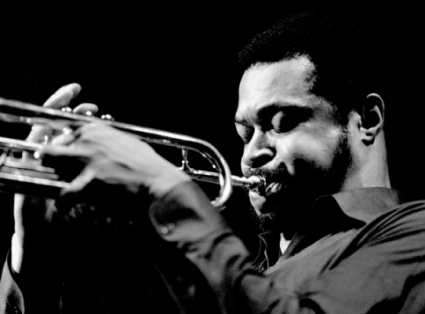
”Every Time” by Michel Krug
The Sunday Poem is published weekly, and strives to include the poet reading their work.... Michel Krug reads his poem at its conclusion
Click here to read previous editions of The Sunday Poem



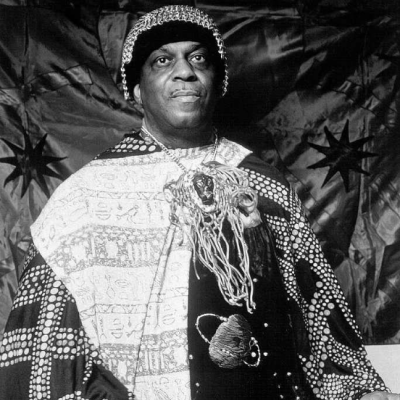
Click here to read more short fiction published on Jerry Jazz Musician
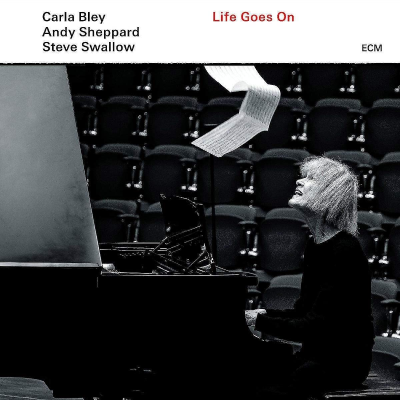

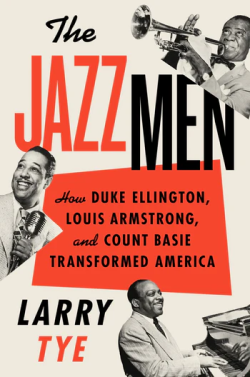
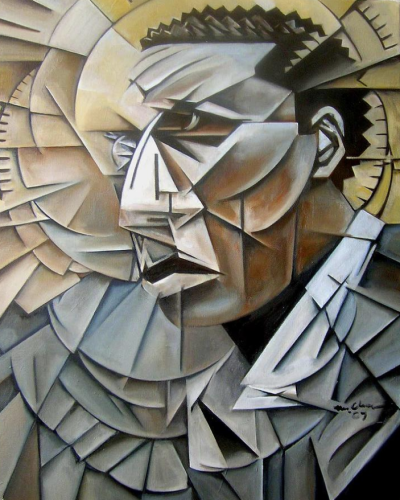
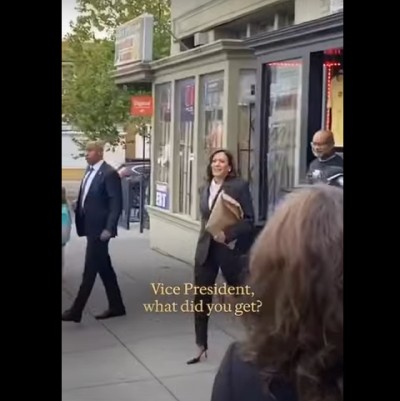

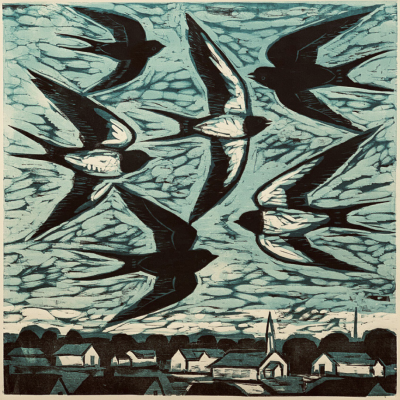
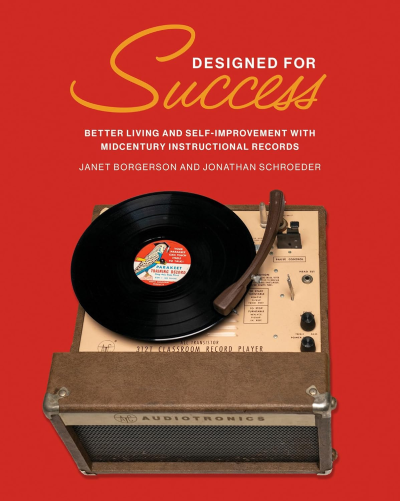
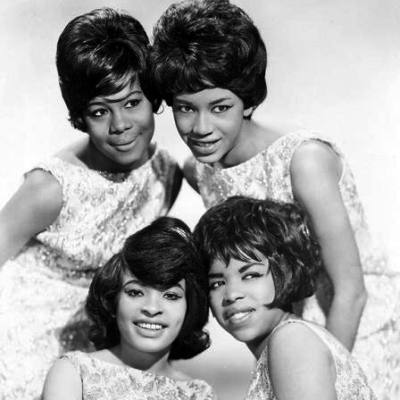

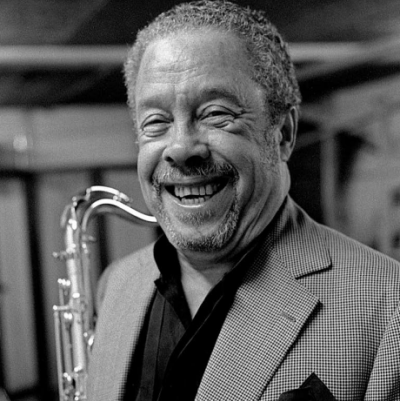
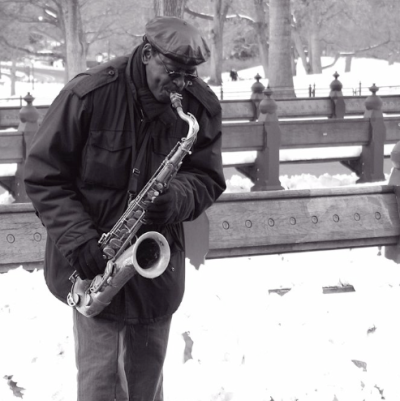
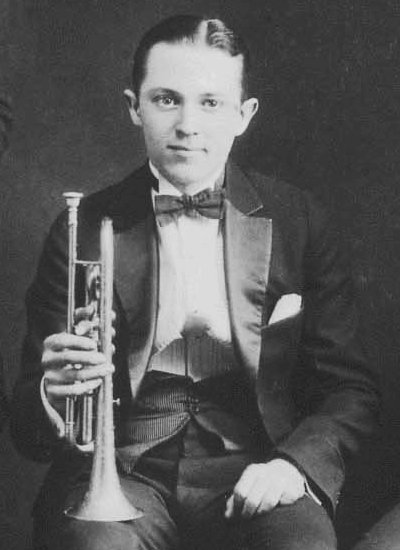
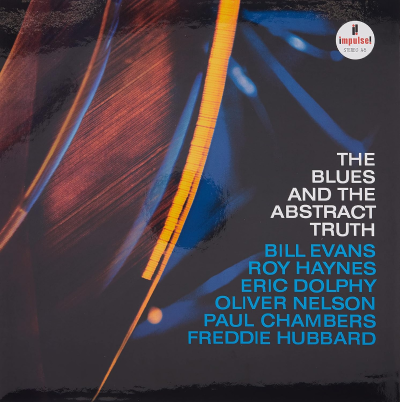
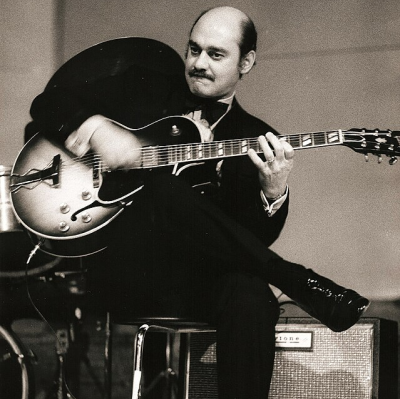
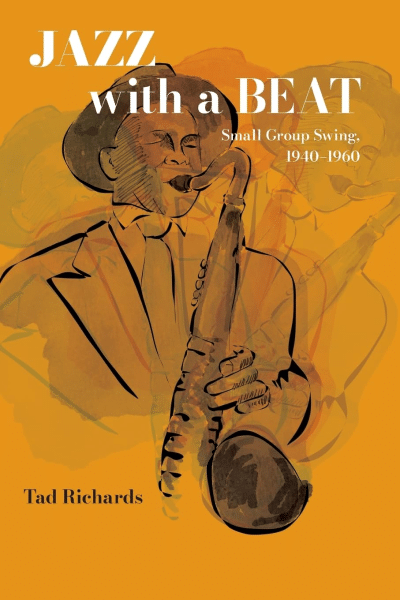
Click here to read more book excerpts published on Jerry Jazz Musician
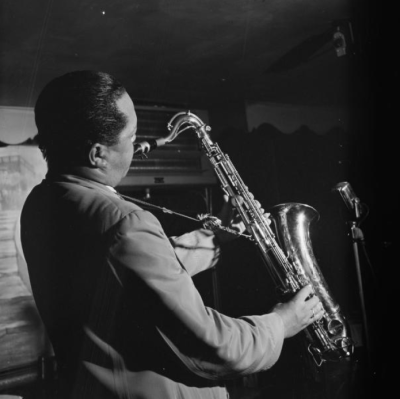
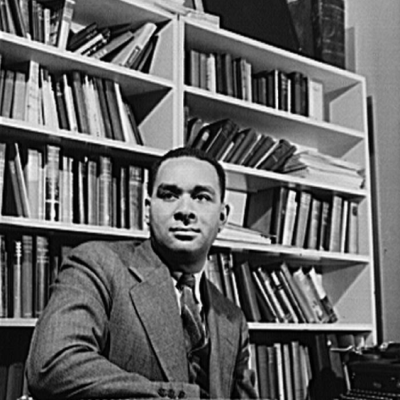




Dear Readers:
Reader funding helps support the expense of publishing this website, and to keep it free of advertising – which is a rarity in the dot-com world. Many thanks to those who have recently contributed, and to those who have done so multiple times. Your support is very much appreciated.
If you are able, please consider making a contribution? Information regarding how to do so is found by clicking here.
For viewing my long range vision for Jerry Jazz Musician, please click here.
Thank you!
Joe Maita
Editor/Publisher
,

